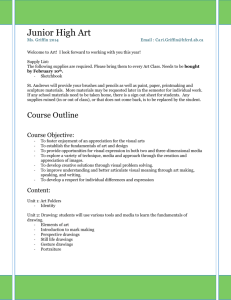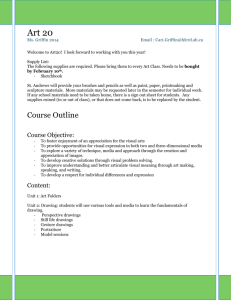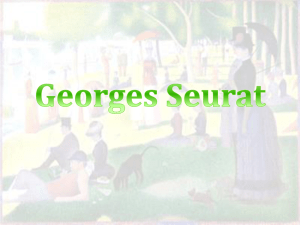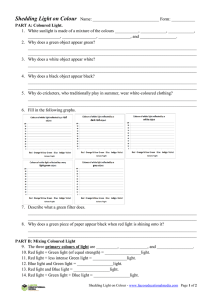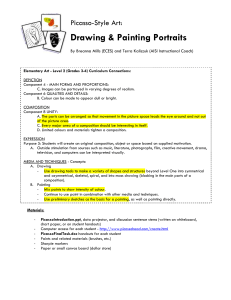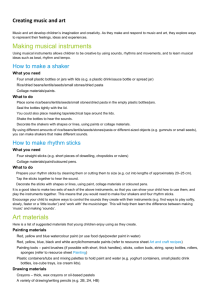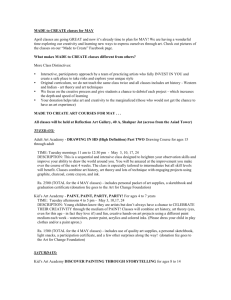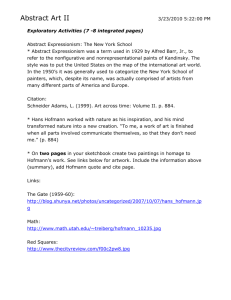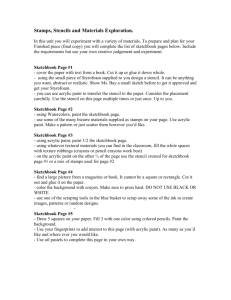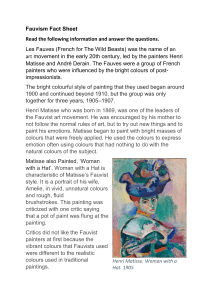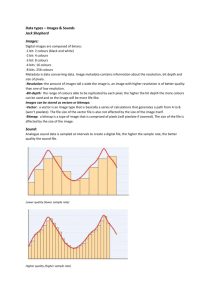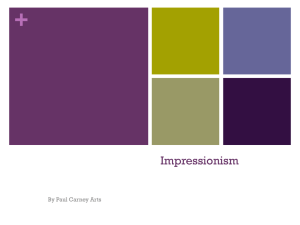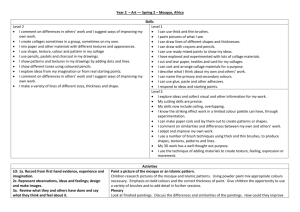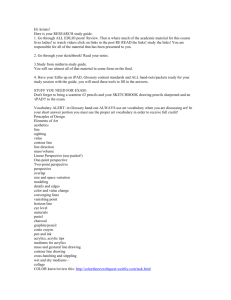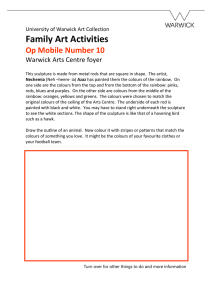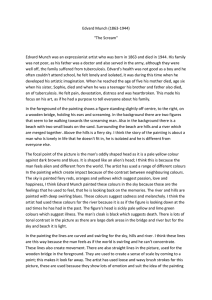Year 5 Art - WordPress.com
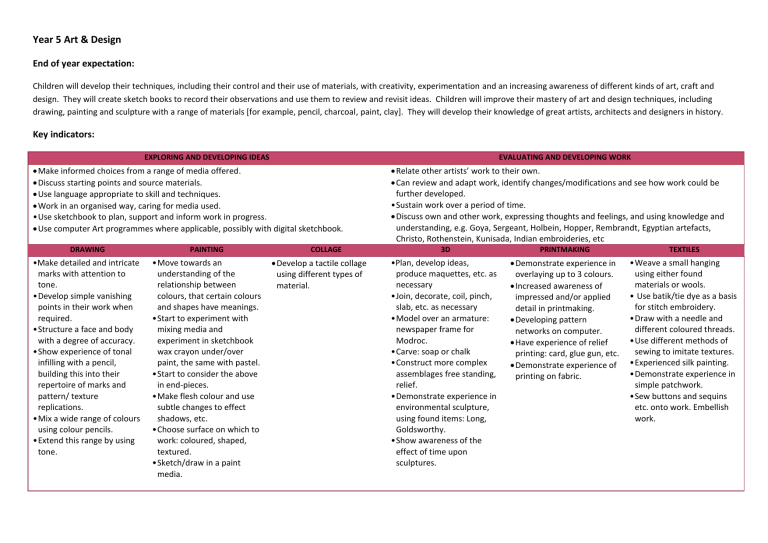
Year 5 Art & Design
End of year expectation:
Children will develop their techniques, including their control and their use of materials, with creativity, experimentation and an increasing awareness of different kinds of art, craft and design. They will create sketch books to record their observations and use them to review and revisit ideas. Children will improve their mastery of art and design techniques, including drawing, painting and sculpture with a range of materials [for example, pencil, charcoal, paint, clay]. They will develop their knowledge of great artists, architects and designers in history.
Key indicators:
EXPLORING AND DEVELOPING IDEAS
Make informed choices from a range of media offered.
Discuss starting points and source materials.
Use language appropriate to skill and techniques.
Work in an organised way, caring for media used.
• Use sketchbook to plan, support and inform work in progress.
Use computer Art programmes where applicable, possibly with digital sketchbook.
DRAWING
•Make detailed and intricate marks with attention to tone.
• Develop simple vanishing points in their work when required.
• Structure a face and body with a degree of accuracy.
• Show experience of tonal infilling with a pencil, building this into their repertoire of marks and pattern/ texture replications.
• Mix a wide range of colours using colour pencils.
• Extend this range by using tone.
PAINTING
• Move towards an understanding of the relationship between colours, that certain colours and shapes have meanings.
• Start to experiment with mixing media and experiment in sketchbook wax crayon under/over paint, the same with pastel.
• Start to consider the above in end-pieces.
• Make flesh colour and use subtle changes to effect shadows, etc.
• Choose surface on which to work: coloured, shaped, textured.
• Sketch/draw in a paint media.
COLLAGE
Develop a tactile collage using different types of material.
EVALUATING AND DEVELOPING WORK
Relate other artists’ work to their own.
Can review and adapt work, identify changes/modifications and see how work could be further developed.
• Sustain work over a period of time.
Discuss own and other work, expressing thoughts and feelings, and using knowledge and understanding, e.g. Goya, Sergeant, Holbein, Hopper, Rembrandt, Egyptian artefacts,
Christo, Rothenstein, Kunisada, Indian embroideries, etc
3D PRINTMAKING TEXTILES
•Plan, develop ideas, produce maquettes, etc. as necessary
• Join, decorate, coil, pinch, slab, etc. as necessary
• Model over an armature: newspaper frame for
Modroc.
• Carve: soap or chalk
• Construct more complex assemblages free standing, relief.
• Demonstrate experience in environmental sculpture, using found items: Long,
Goldsworthy.
• Show awareness of the effect of time upon sculptures.
Demonstrate experience in overlaying up to 3 colours.
Increased awareness of impressed and/or applied detail in printmaking.
Developing pattern networks on computer.
Have experience of relief printing: card, glue gun, etc.
Demonstrate experience of printing on fabric.
• Weave a small hanging using either found materials or wools.
• Use batik/tie dye as a basis for stitch embroidery.
• Draw with a needle and different coloured threads.
• Use different methods of sewing to imitate textures.
• Experienced silk painting.
• Demonstrate experience in simple patchwork.
• Sew buttons and sequins etc. onto work. Embellish work.
